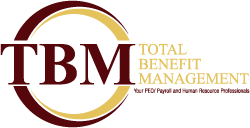- Total Benefit Management

5 Ways Employee Engagement Makes Your Company More Competitive
December 18, 2018
When to Cut Ties With a Longtime Employee
January 2, 2019January is the top hiring month for most businesses. As you venture out to find new team members, check out these helpful tips.
This article comes from Entrepreneur.
8 Keys to Hiring the Right Team Members
What, though, are the biggest pitfalls scaling companies need to look out for in the hiring process? And, what are the critical keys to hiring without compromising the growth path of a scaling company?
1. Centralize the hiring decision and take consensus out of the picture.
The fear that a new hire might be better than the person interviewing them is enough to muddy the waters. But, teams should be hiring people better than themselves.
It’s important to remove bias from the equation by putting hiring into the hands of a hiring manager. This helps avoid pushing decisions down the ladder, where there’s less experience, less comfort with risk and less confidence to make company-impacting decisions.
2. Have a structured — but flexible — recruitment process.
Structure sets expectations for everyone. A typical setup involves pre-interview, post-interview and the interview loop in-between.
The key to successful recruitment, though, is a team’s flexibility. If a candidate drives from Maine to Boston for her first interview, should she be forced to make another round-trip because the structure requires two separate interview rounds?
Flexibility means accelerating the process and completing the interview loop in one day, so as not to lose good candidates for the sake of procedure.
3. Take speed seriously.
Speed is the strongest hiring weapon a company can wield. Yello’s study also found that 50 percent of applicants will have more than one suitor, meaning companies lose good candidates when they hesitate to decide.
Centralizing hiring decisions contributes to a speedy process: a hiring manager’s decision can be made much faster if he doesn’t need to look for someone else to back it up.
4. Empower for exceptions.
At Drift, we take no more than seven days from the time we hear a candidate’s name to the time we make her an offer. However, there are two exceptions, that every hiring manager should be empowered to make.
The first is for the C-suite. The process here should take longer, but should still proceed with haste.
The second is the ability to make an offer on the spot. Job transitions are logical and emotional decisions, and if a prospective new employer catches a prospective hire when he is both upset about where he is and excited about where he could be, that’s the time to move.
5. Accept the inevitability of a bad hire.
Too many teams try to optimize for hiring perfection. A bad hire, or the prospect of one, tempt a team into bringing more checks, people, and steps into the process, slowing everything down and giving competitors an edge to snatch up a good candidate.
6. Look for three red flags that every bad hire exhibits.
With that said, there are three red flags to look out for in the interview loop that are the surest signs of bad hires:
- Are they solely motivated by money?
- Do they come across as arrogant?
- Are they unprofessional, negative, or just difficult to work with in general?
Don’t look for hints: Be certain. These might not show up in the interview, but when they do, it’s critical to take action quickly.
7. Recruit for customer success.
A company’s purpose is to make its customers successful. Every new hire should be recruited based on their ability to achieve this goal.
Putting customers first shouldn’t just apply to the day-to-day. Ask questions that help determine if candidates can serve customers better, rather than serving themselves.
8. Never stop searching.
Too many companies go too long without recruiting new talent. They put budget in the way or prioritize other tasks. But, hiring is as important as building or selling a product. If a company can’t recruit, it’s less valuable to its customers.
A company can always bring in people to add the talent it needs to reach its next level of growth. It’s crucial to never stop searching because by building teams first, the products — and success — follow.
Click here to view the original article.

